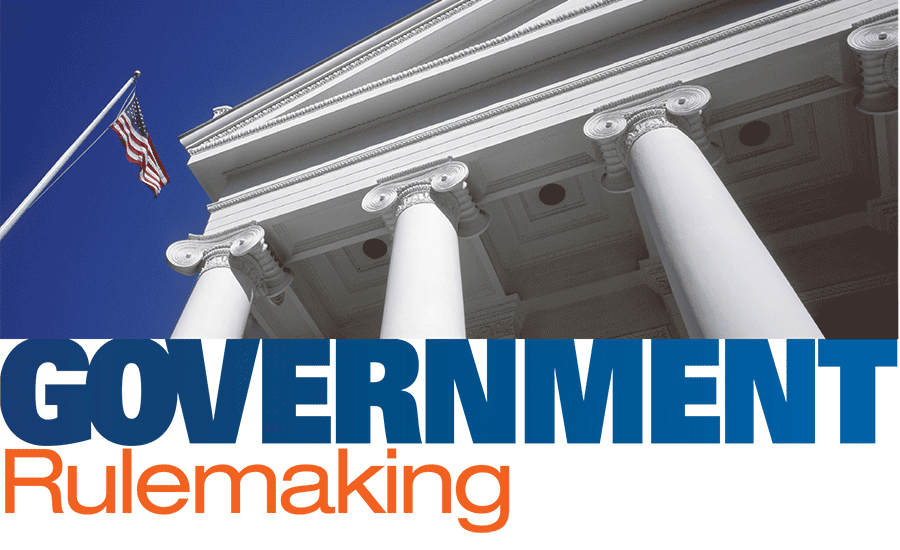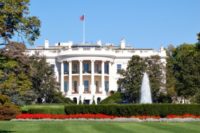The spring regulatory agenda released last week by the Trump administration showed the president making further inroads into dismantling a regulatory environment that he described during his campaign as “burdensome” to business.
The agenda, which contains no notices of new OSHA rulemaking and numerous rules-in-progress that will no longer go forward, has potentially enormous implications for worker safety in the U.S. going forward.
Rules not included
Among the rules which will not be included in the administration’s regulatory plan:
Combustible dust: A plan to develop a combustible dust standard for general industry. The U.S. Chemical Safety and Hazard Investigation Board (CSB) completed a study of combustible dust hazards in late 2006, which identified 281 combustible dust incidents between 1980 and 2005 that killed 119 workers and injured 718.
Construction noise: Two recent studies of occupational hearing loss conducted by Department of Energy and National Institute for Occupational Safety and Health concluded that a significant percentage of construction workers have suffered from hearing loss over the duration of their careers. It has been noted that construction work is excluded from the OSHA Hearing Conservation Amendment that is required for general industry work. Also existing construction noise requirements lack the specificity of a general hearing conservation program that must be implemented for general industry work. Discussions within the industry and new information, such as the two referenced hearing loss studies, have prompted OSHA to consider that it may be necessary to revisit whether requirements are effective for protecting construction workers from noise hazards.
Preventing Backover Injuries and Fatalities: Backing vehicles and equipment are common causes of struck-by injuries and can also cause caught-between injuries when backing vehicles and equipment pin a worker against an object. Struck-by injuries and caught-between injuries are two of the four leading causes of workplace fatalities. The Bureau of Labor Statistics reports that in 2013, 67 workers were fatally backed over while working. While many backing incidents can prove to be fatal, workers can suffer severe, non-fatal injuries as well. A review of OSHA's Integrated Management Information System (IMIS) database found that backing incidents can result in serious injury to the back and pelvis, fractured bones, concussions, amputations, and other injuries. Emerging technologies in the field of backing operations may prevent incidents. The technologies include cameras and proximity detection systems. The use of spotters and internal traffic control plans can also make backing operations safer.
Revocation of Obsolete Permissible Exposure Limits (PELs): This OSHA project to revoke a small number of obsolete permissible exposure limits (PELs) for chemicals contained in the 29 CFR 1910.1000 Table Z-1. is in accordance with Executive Order 13563, which is intended to facilitate the review of existing regulations that may be outmoded, ineffective, insufficient, or excessively burdensome, and to modify, streamline, expand, or repeal them. In particular, the Agency proposed revocation of a small number of chemical PELs for which the OSHA PEL substantially exceeds other recommended occupational exposure limits and for which the agency has evidence that workers are not generally being exposed at a level approaching the OSHA PEL (e.g., employers have not been cited for violation of the PEL for some time). The agency was particularly concerned that the continued existence of these obsolete PELs imparts a false level sense of security to workers and employers who mistakenly believe that the PEL represents the level at which there are no adverse health effects.
Lock-Out/Tag-Out Update: Recent technological advancements that employ computer-based controls of hazardous energy (e.g., mechanical, electrical, pneumatic, chemical, radiation) conflict with OSHA's existing lock-out / tag-out standard. The use of these computer-based controls has become more prevalent as equipment manufactures modernize their designs. Additionally, there are international standards harmonization concerns since this method of lockout/tag-out is more accepted in other nations. The Agency has recently seen an increase in requests for variances for these devices.
Blood Lead Level for Medical Removal: Recent medical findings indicate that lower blood lead levels (BLLs) in adults can result in adverse health effects including hypertension, cognitive dysfunction, and effects on renal function. These and other health effects (adverse female reproductive outcomes) are being identified in individuals with BLLs under 40 µg/dL. The lead standards for general industry and construction are based on lead toxicity information that is over 35 years old. OSHA lead standards allow for the return of the employee to former job status at a BLL < 40 µg/dL. The U.S. Department of Health and Human Services, Council of State and Territorial Epidemiologists (CSTE), and California’s Medical Management recommends that BLLs among all adults be reduced to <10 µg/dL. OSHA was exploring regulatory options to lower blood leads in affected workers.
Quantitative Fit Testing Protocol: Amendment to the Final Rule on Respiratory Protection: In January 1998, OSHA published the final Respiratory Protection standard (29 CFR 1910.134). In the final revised respirator standard, OSHA set up a mechanism for OSHA's acceptance of new fit test protocols under Mandatory Appendix A. Any person may submit to OSHA an application for approval of a new fit test protocol, and if the application meets certain criteria, OSHA will initiate a rulemaking proceeding under 6(b)(7) of the OSH Act to determine whether to list the new protocol as an approved fit test protocol in Appendix A. OSHA has received a submission to consider three new quantitative fit test protocols that reduce the time required to complete the fit test while maintaining acceptable test sensitivity, specificity, and predictive value. Employers, employees, and safety and health professionals use fit testing to select respirators. Currently OSHA relies on fit testing methods specified in Appendix A of the final revised Respiratory Protection standard. When OSHA published the final Respiratory Protection standard in 1998, it allowed for later rulemaking on new fit test protocols. This rulemaking action would have allowed for the incorporation of new fit test protocols into 1910.134.
Improve Tracking of Workplace Injuries and Illnesses: The Department proposed to delay until December 1, 2017, the initial reporting date related to this final rule which changed regulations related to employer reporting of workplace injuries and illnesses.
Tracking of Workplace Injuries and Illnesses: OSHA intended to issue a proposal to reconsider, revise, or remove provisions of the improve Tracking of Workplace Injuries and Illnesses final rule, 81 FR 29624 (May 12, 2016).
Exposure of Underground Miners to Diesel Exhaust: Epidemiological studies have found that diesel exhaust presents health risks to workers. These possible health effects range from headaches and nausea to respiratory disease and cancer. MSHA's existing regulations address the health hazards to underground metal and nonmetal miners (66 FR 5706) and coal miners (66 FR 5526) from exposure to diesel particulate matter (DPM). DPM is a component of diesel exhaust. MSHA also has limits for miners’ occupational exposure to selected components of the gaseous fraction of diesel exhaust. In June 2012, the International Agency for Research on Cancer classified diesel exhaust as a known human carcinogen. The National Institute for Occupational Safety and Health and the National Cancer Institute also have stated that diesel exhaust exposure has important public health implications, including increasing the risk of death from lung cancer. Because of the carcinogenic health risk to miners from exposure to diesel exhaust, MSHA requested information on approaches that would improve control of DPM and diesel exhaust.
Black Lung Benefits Act: Medical Benefit Payments: Coal miners who are totally disabled by pneumoconiosis and found entitled to monetary compensation under the Black Lung Benefits Act are also entitled to medical benefits for treatment of their disease and associated disability. The current program regulations generally provide that payment for medical treatment and services is capped at the rate prevailing in the community where the service provider is located but provide no method for determining that rate. To fill this gap for medical benefit payments made from the Black Lung Disability Trust Fund, OWCP proposed rules to address how medical providers are reimbursed for covered services.
Beryllium PEL rule still alive
Occupational Exposure to Beryllium: In 1999 and 2001, OSHA was petitioned to issue an emergency temporary standard for permissible exposure limit (PEL) to beryllium by the United Steel Workers (formerly the Paper Allied-Industrial, Chemical, and Energy Workers Union), Public Citizen Health Research Group, and others. The Agency denied the petitions but stated its intent to begin data gathering to collect needed information on beryllium's toxicity, risks, and patterns of usage. On November 26, 2002, OSHA published a Request for Information (RFI) (67 FR 70707) to solicit information pertinent to occupational exposure to beryllium, including: current exposures to beryllium; the relationship between exposure to beryllium and the development of adverse health effects; exposure assessment and monitoring methods; exposure control methods; and medical surveillance. In addition, the Agency conducted field surveys of selected worksites to assess current exposures and control methods being used to reduce employee exposures to beryllium. OSHA convened a Small Business Advocacy Review Panel under the Small Business Regulatory Enforcement Fairness Act (SBREFA) and completed the SBREFA Report in January 2008. OSHA also completed a scientific peer review of its draft risk assessment. OSHA published a NPRM for a comprehensive beryllium standard for general industry on August 7, 2015 (80 FR 47565) and convened an informal public hearing on the proposed hearings in Washington, D.C., on March 21 and 22, 2016. Following the Agency's review and consideration of comments and testimony received on the proposed standard, OSHA published final comprehensive standards for general industry, construction and shipyards on January 9, 2017 (82 FR 2470). In accordance with the Presidential directive as expressed in the memorandum of January 20, 2017 from the Assistant to the President and Chief of Staff entitled "Regulatory Freeze Pending Review," OSHA delayed the effective dated of the standard to May 20, 2017, to allow OSHA officials the opportunity for further review and consideration of the new regulations. Based on this review and the comments received in response to extending the effective date on June 27, 2017. OSHA proposed changes to the standards that apply to construction and shipyard operations.
Exposure to beryllium causes a disabling and potentially fatal chronic lung disease called Chronic Beryllium Disease (CBD). Exposure to beryllium has also been linked to lung cancer. OSHA reduced the permissible exposure limit (PEL) by 10 times to 0.2 micrograms of beryllium per cubic meter of air (µg/m 3 ) over an 8-hour time weighted average (TWA) and a short term exposure limit (STEL) of 2.0 µg/m 3 over 15 minutes. OSHA also included requirements such as medical surveillance, medical removal protection, regulated areas, training, and engineering controls.


